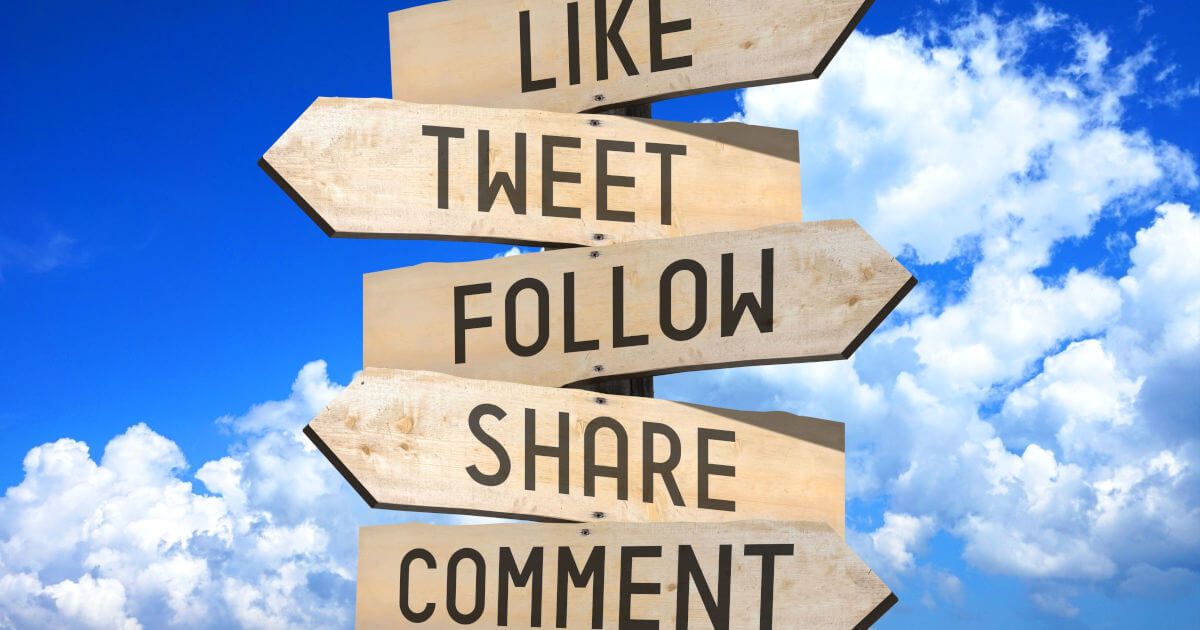The most popular hashtags: extend your reach
Attention is regarded as the strongest currency of our time – especially in social networks. But high-quality content alone is no guarantee for an ever-increasing number of followers. The goal of many social media users is to have the widest possible reach on Twitter, Instagram, Facebook, etc. If you too would like to promote social media content on a massive scale, the so-called hashtag is the right choice. Hashtags give your posts a kind of label, arouse interest, and address selected target groups. Using tags on content enables posts and tweets to be assigned as well as integrated into the social network’s keyword search.
What is a hashtag? – the definition of the sign
You have most probably stumbled upon one or two hashtags while using social media. The microblogging service, Twitter, launched the popular keywords in 2007. Alongside Twitter, the pioneer of keyword search is Instagram, a photo sharing service that has since been purchased by Facebook. Since a tweet on Twitter must not exceed 280 characters (it used to only be 140 characters), Twitter hashtags offer the ideal way to group short tweets depending on their topic. In order to identify content, such as photos and videos that are shared, as well as enabling written communication, hashtags have become fully established on Instagram as well. In addition, users use hashtags to create an emotional reaction to a post.
The term 'hashtag' is a combination of the word 'hash' and 'tag'. The hash is, of course, the '#' symbol, and tag refers to the label that is given to the content. Hashtags enable you to filter information quickly and precisely, as well as identifying and tracking current trends and topics.
What is there to know about hashtags?
Hashtags are an integral part of almost all social media platforms. Although the various social channels differ in their functions and intentions, hashtags are used in a fairly similar fashion across all networks.
Unlike other tagging methods, hashtags are inserted directly into the post itself. The terms in question are tagged with a hash and can also be inserted at the end of the post. Hashtags are often created by one user and then adopted by other users. The rapid viral spread of some hashtags leads to a worldwide exchange on various topics.
Trends and topic relevance
When a user searches for a specific hashtag on a social network, they will be shown posts linked to this keyword. Lists of the currently most popular hashtags are made available to users of all of the common networks. This makes it possible to follow trends and makes hashtags ideal for research on currently trending developments. If you would like to be associated with a certain term, for example, for an advertising campaign, it’s important to find the thematically correct hashtags. Use of hashtags can, therefore, increase the reach of your content.
How to gain more followers
On average, 125 million different hashtags are used worldwide every day. These are not connected with any rights or privileges: every user is free to create and use them. The brain behind the 2007 hashtag movement, Chris Messina, decided against a patent since it could hinder the use of hashtags.
Basically, hashtags are only allowed to consist of letters, numbers, and emojis. Punctuation marks (. , ; : ! ?, etc.) are not supported, and if they are used, they symbolise the end of the hashtag.
For example, the hashtag #follow for follow would be assigned to the keyword #follow.
Special characters such as $, %, or & are not consistently supported by all client programs and should also be avoided.
A hashtag such as #Romeo&Juliet could be interpreted as #Romeo, #Romeo&, or #Romeo&Juliet.
The underscore (_) is an exception: if a hashtag contains several words, these must be either written together or combined with underscores.
No distinction is made between upper and lower case. Hashtags are not case-sensitive. However, in order to improve the readability of multipart hashtags, a writing style has been established in which each new word begins with a capital letter.
Here are two ways of writing the same hashtag:
#followforfollow
#FollowForFollow
A search for both hashtags leads to the same result.
In principle, you can use hashtags in any language. However, keywords written in English have the greatest reach, not only because English is the lingua franca of the internet but also because English does not require special characters that may not be supported in hashtags.
In addition, you should consider the following principles to help you get closer to your goal of gaining more followers on Twitter or Instagram:
- The right choice: look at your post from your target group’s perspective. Try to select target group relevant keywords that are associated with the topic of your post. Before publishing, check whether relevant hashtags already exist. A short keyword search often reveals a number of hashtags relevant to the topic. Think up your own hashtags, if necessary
- The right hashtag mix: popular hashtags give your content more reach. However, you’re not guaranteed to receive the desired attention. When using top hashtags, you can expect to compete with a variety of other users who use the same keywords to distribute their content. There is a danger of being drowned out. If you want to stand out, you can also rely on niche specific hashtags or be creative with your own hashtags. Ideally, you should use a mix of hashtags
- The right amount: don’t be afraid to use more than one hashtag per post. Every hashtag you use helps to spread your content. However, be aware of the thematic relevance and avoid the hashtags getting out of hand. Basically, the focus should be on your content and not on the keyword set. Less is more! Otherwise, you run the risk of your posts being seen as spam by other users. The optimal number of hashtags also depends on the platform you’re publishing your content on. While Twitter users should also use hashtags sparingly due to the limited number of characters for each post, many Instagram hashtags are quite common
- The optimal placement: hashtags should always be at the end of a post to ensure good readability. Integrating a hashtag directly into the post is only recommended if you explicitly want to address the hashtag or refer to it. On Instagram, the user community splits into two camps when it comes to the question of placement: some people place hashtags directly in the image description, others in the first comment under the image. The idea behind the second variant is that the keyword cloud is less prominent and the post appears more natural. The disadvantage is that in the time between posting and selecting the keywords, the image could end up being located so low down the list of posts because so many other images have the same popular Instagram hashtags that no-one would notice it anyway
Apps such as TagsForLikes provide tools to store collected hashtags in an orderly manner and to copy and paste them into your post at a later date.
Create high-quality and interesting content. Even the best hashtags are useless if your content misses the mark.
Top hashtags – don’t dismiss these tags
There are no universally valid and timeless hashtags that are absolutely essential for success. However, extensive research can accelerate development and be more promising. To do this, it is helpful to look at current figures on the current most popular hashtags. The website, Top-HashTags.com lists hashtag rankings and provides daily updated figures.
The following list of current top hashtags can help you. You should note, however, that these can quickly be worn out due to their high level of distribution.
Followers and likes
#likeforlike; #followme; #follow; #follow4follow; #tagsforlikes; #followforfollow
Trending terms
#tbt; #repost; #nofilter; #ootd
Feelings and reactions
#love; #beautiful; #happy; #cute; #fun; #smile
Photography
#photooftheday; #picoftheday; #selfie; #photography; #photo
Fashion
#fashion; #style; #beauty
Fitness and sport
#fitness; #motivation; #gym; #fit; #workout
Travel
#travel; #holiday; #nature; #summer; #sun; #beach; #sunset
People
#me; #family; #friends; #girl; #boy
Food and drink
#food; #foodporn; #healthy; #yummy
Instagram-specific
#instagood; #instadaily; #instalike









